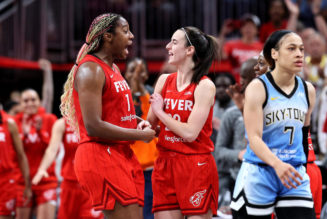
The image of a studious football scout in a golf cap busily scribbling notes in a hardbound notebook, his gaze sleuthing unflinchingly for the dazzle of an unknown, uncut diamond in a rough locale in the depths of Africa or Latin America is a thing of the past. The new image could be of a bunch of nerds with thick glasses poring through the leagues and footage of players in the horde of football data analysis websites that have sprung, and have become the most trusted tool for unearthing raw and young talents, in the last two decades.
It’s not that old scouts and their methods have become dated or dead, but rather these tools have redefined their roles. Top clubs do have a robust network to spot and track glittering in every continent, because ultimately the sharpest judge is still the human eye and judgement, but they no longer need to have a dedicated scout covering a league to find players, they might not unearth talents the world has not casts its eye on, because everything is there in front of their eyes, on the fingertips. Using data, clubs sift through thousands of players and produce a list of prospects, then video-scout to trim the list, before finally sending live scouts to watch them.
In a sense, it has democractised knowledge about a player, though the big clubs inevitably acquire them first. But there is no secret or opaqueness. There is no player unknown or untraced. Erling Haaland was barely in his teens when the world was aware of his gifts, or Josko Gvardiol or Victor Osimhen. So Chelsea wants to sign Angelo, monikered as is the norm these days the “New Neymar” from Santos, but his name does not trigger immediate surprise because the videos of him dribbling and feinting have been viral for a long time.
There might no longer exist the charm of the unknown, the spontaneous romance of an unheard fledgling marveling the world overnight will be served at a premium, or not served at all. Chances are that Barcelona, or any other club, would have watched before hearing about Ronaldinho from scout Josep Maria Minguella, who was alerted of “a player who is a spectacle, fast and very skilful,” by an advocate who happened to be the forward’s neighbor. Mingella, in turn, alerted Barcelona, who thought he was too “showy”. PSG picked him for 5 millions pounds and later sold to Barcelona for 30 million dollars. Similarly, Ramón Rodriguez Verdejo, the man once dubbed as the “Messi of talent spotting” spotted Dani Alves bombarding the right wing in an U-20 national tournament. He immediately intimated the top clubs of Europe. He impressed no one, but Sevilla, who brought him for around one million pounds and later sold to Barcelona for 23 million pounds.
Their fates could have been different, or in the case of Alves and Ronaldinho, they could have reached Barcelona faster if data-mining was accessible at the stroke of this century. In this era, they could have just browsed WyScout or Scout to fish out more details of a starlet.
Among the deluge of such platforms, Wyscout is the most ubiquitous one. Tucked in Chiavari, a quaint town some 30 kilometers south of Genoa, the firm offers comprehensive video coverage and detailed statistical analysis of thousands of players in 100-odd countries worldwide, with a team of 200 analysts collecting data from 1500-odd matches per week. Its CEO Matteo Campodonico was just another football enthusiast who video-graphed games in his locality. Some of the videos gathered the notice of local club Genoa who began to outsource videos, photographs and data from him. Now almost every top club in Europe and North America subscribes to the company he set up in a room of his school in 2004 with his friends Simone Falzett and Piermaria Saltamacchia. Those clubs have detailed highlights of a large proportion of the world’s professional and even some semi-professional footballers at their fingertips.
It’s how Manchester United, as the rumour goes, were convinced of signing Anthony Martial, though he was an unknown. It’s how, more successfully, how Genoa acquired Polish striker Krzysztof Piatek for seven million pounds and then sold him to AC Milan for 35 million pounds.
Advertisement
In an annual gathering of scouts in Amsterdam, an initiative of his company, Campodonico would boast: “We are for football what Bloomberg is for finance. Can you think of making a financial investment without checking Bloomberg? I hope it will be the same for WyScout. To find your player you must start putting your filters on WyScout.”
Some of the facilities it had recently added included a domain where clubs can list their transfer-listed players, examine footage of player trials, contact agents to discuss potential offers, view contract duration of players they are interested in signing and much more. It has helped clubs cut costs on maintaining a wide network of scouts and traveling to distant corners of the globe, but also has helped them access player’s footage faster. The process of identifying and recruiting has become easier and faster. Not just money, technology has saved time too.
However, the devotion to data is not blind. For all the data dissection, clubs send scouts physically to watch the targets live. But data and video have made the task of identifying a player a club wants much faster. For data cannot provide details of a player’s personality, like whether he is selfish or not, whether he throws tantrums or whether he shouts at the support staff, or how he reacts to being substituted, or whether he is a regular in practice sessions, or about his work rate on the training ground, or the standard of the league and the opposition on a particular day, the weather and conditions of the ground, or how they work off the ball, little but decisive things only the human eye and mind could judge. Besides, they watch them for a whole game, which helps draw a clearer picture of the player.
Advertisement
Campodonico himself is certain of the role the scouts play. “At the end you still need someone that will go to Brazil and watch a player in Sao Paulo. That is how you learn about the players’ private life, their parents, these are things that clubs require,” he said during a conclave in 2018.
There are other websites like smarterscout.com,, founded by an American economist Dan Altman who used to write columns in newspapers before he streamed into football analytics for fun and went onto work as a consultant for Manchester City among other clubs. Similarly. Jay Socik’s football data-analysis on Twitter got the attention of newly promoted EPL club Luton Town. They made him head of recruitment analysis last year, and he was instrumental in finding manager Rob Edwards after his predecessor Nathan Jones at Kenilworth Road departed on short notice.
Data might not yet be the king in the transfer market, but it surely is a powerful weapon in able hands. It has not killed the job of the scouts, but rather redefined their roles. And football is enjoying the best of both worlds—the instinct of the human judgement, the judgement of a seasoned scout’s eye as well as the science of numbers.
Services Marketplace – Listings, Bookings & Reviews









